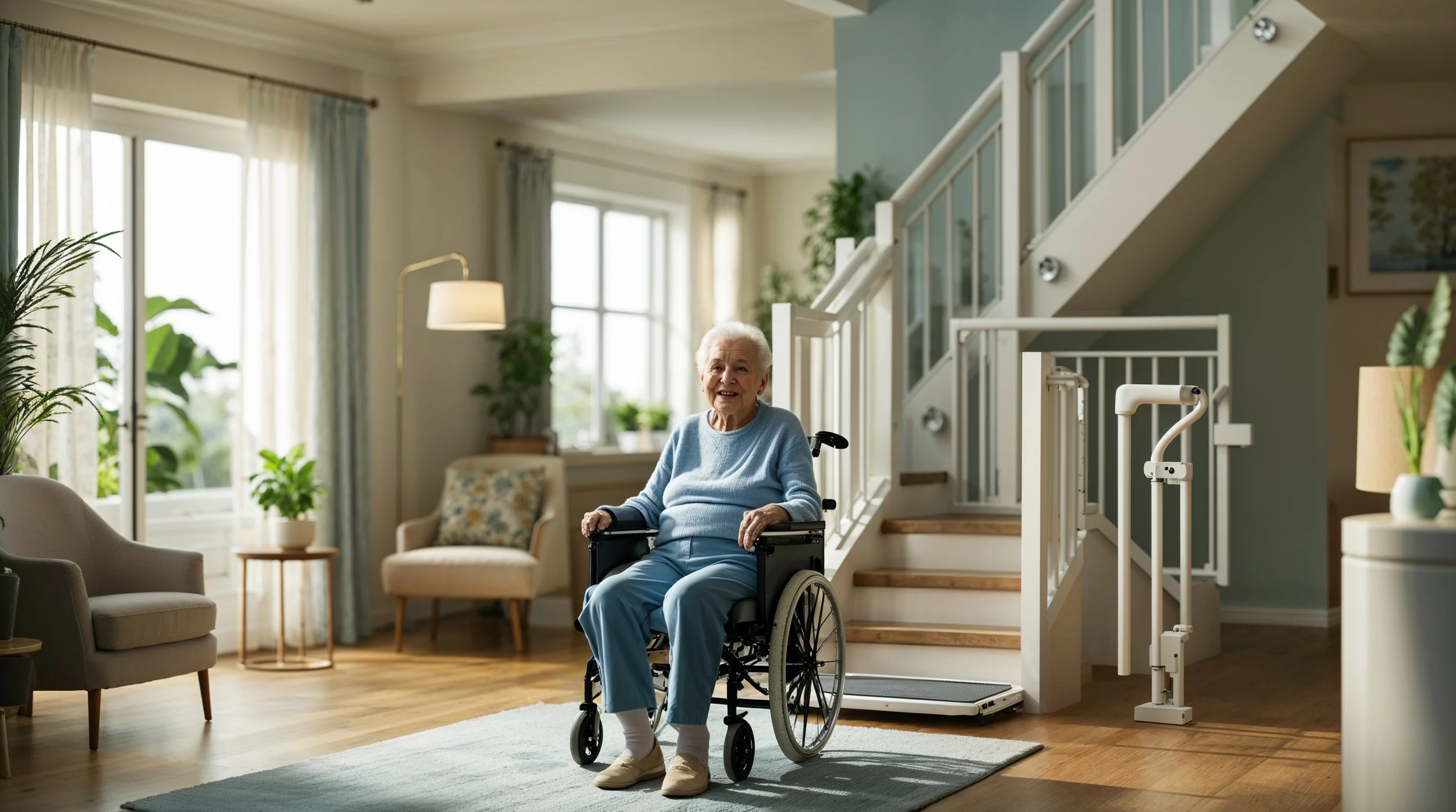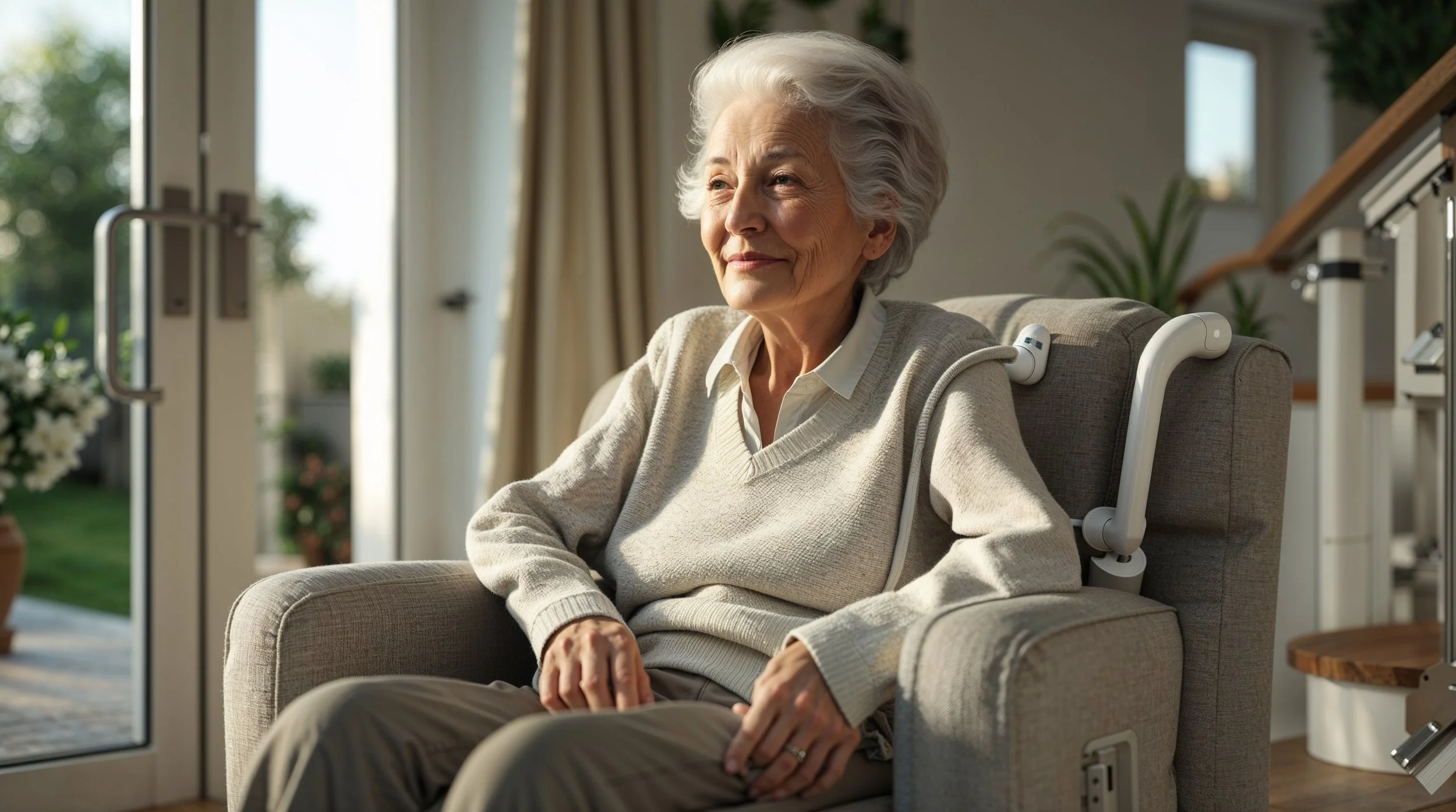How to Adapt a Home for Aging in Place
Most folks don’t think about it until they have to: a stumble on the stairs, a hard-to-reach cabinet, a bathroom that suddenly feels like an obstacle course. But preparing your home for aging should be something to plan for, while you still have the freedom to shape it your way.
The idea of leaving the home you’ve built your life in, just because it doesn’t “fit” anymore, can feel like giving up part of your story. But you don’t have to. With the right updates, your home can keep working for you as your needs evolve.
This guide will walk you through how to remodel smart, safe, and beautifully without losing the soul of the home you love.
What Does it Mean to Adapt a Home for Aging in Place?
Adapting a home for aging in place means making thoughtful changes that support safe, independent living as we grow older. These updates focus on accessibility, fall prevention, and ease of use without making the home feel like a hospital.
Think walk-in showers instead of tubs, wider doorways, better lighting, and hardware that’s easier on the hands.
The goal is to make sure daily routines, such as cooking, bathing, getting in and out of the house, stay comfortable and manageable, even if mobility or health needs change over time.
Why Aging in Place is Becoming the Preferred Choice
There’s a growing shift happening across the country. More homeowners are choosing to remodel and stay put rather than move into assisted living or retirement communities. And it’s not just about cost. It’s about control, comfort, and dignity.
Emotional and financial benefits of staying home
Moving can become disruptive. Selling your home, downsizing, and starting over somewhere unfamiliar can be overwhelming, especially when it feels forced.
Aging in place allows you to hold onto the home you've poured your life into while avoiding the steep monthly costs of long-term care facilities.
For many families, remodeling is a far more affordable and emotionally grounded option.
Familiar surroundings promote confidence
There’s peace in knowing where every light switch is, how the floor creaks near the hallway, and which cabinet holds the coffee filters.
That sense of familiarity becomes even more important as we age. It reduces anxiety, supports memory, and helps prevent accidents caused by disorientation.
Upgrading the space without uprooting your life is the best of both worlds.
Aging in place supports mental and physical health
When you’re comfortable in your space, you're more likely to stay active, maintain routines, and feel secure in your daily rhythm.
Studies have shown that people who age in place often experience less depression, stay more socially connected, and retain more autonomy, which all contribute to better health outcomes overall.
Aging in Place Home Modifications: Key Areas to Adapt
Adapting your home for aging in place doesn’t mean a full overhaul.
Most of the time, it simply involves smart changes in the right places where safety, comfort, and usability matter most.
Let’s get through the parts of the home that deserve a closer look when planning a remodel with the future in mind.
Entryways and front doors
The entrance sets the tone. If there are stairs, narrow door frames, or heavy knobs, just getting inside becomes a daily challenge.
A zero-step entry, wider doorway (36 inches is a good target), and lever-style handle can make all the difference. Especially for walkers, wheelchairs, or even just aging hands that don't grip like they used to.
Lighting at the door and a covered entry help too, especially in Portland’s rainy months.
Kitchens
This is where function meets safety.
Pull-out shelves make reaching lower cabinets easier.
Rounded countertop edges reduce injury risk.
Lever-style faucets and D-shaped drawer pulls are easier on aging joints.
Lowering a section of the counter for seated prep, or even installing a wall oven at standing height, can improve usability without compromising design.
And don’t underestimate lighting. Good task lighting in the kitchen is a must.
Bathrooms
Bathrooms are one of the most important rooms to modify. Start with a curbless shower or a walk-in tub. Add grab bars that actually look good (yes, they exist), and make sure the flooring is slip-resistant.
A comfort-height toilet, a handheld showerhead, and an accessible vanity with space for seated use can turn a hazard zone into a truly safe space.
Bonus tip: install blocking in the walls during your remodel so grab bars can be added or relocated later without a hassle.
Bedrooms and main floor access
If your bedroom is upstairs, consider relocating it to the main floor (now, not later). Avoiding stairs is one of the biggest quality-of-life improvements as mobility changes.
Bedroom modifications can also include rocker light switches, smart lighting, and smooth, low-maintenance flooring for easier movement and cleaning.
Even little touches like better night lighting can make your evenings safer and more relaxing.
Hallways and doorways
Aging in place often means accommodating mobility devices even if you're not using one now. Widening doorways to 36 inches, removing floor thresholds, and smoothing out transitions between rooms help reduce trip hazards and increase maneuverability.
Safety and Accessibility Upgrades That Make a Difference
Big renovations matter. But so do the small upgrades that get used every single day. These changes might seem subtle, but they add up to a safer, smoother home experience as you or your loved ones age.
Better lighting and visibility
As we age, our eyes need more light to see clearly—in stairways, bathrooms, and work areas. Add task lighting under cabinets, brighten hallways with LED fixtures, and install motion-sensor lights in places such as closets, entries, and bathrooms for safety at night.
Even something as simple as adding contrasting colors between floors and walls can help with depth perception and prevent trips.
Flooring choices to prevent slips and trips
Your floors should be stable, slip-resistant, and smooth enough for easy movement. We often recommend vinyl, cork, or rubberized flooring not just for safety, but also for comfort underfoot.
If you have area rugs, it may be time to retire them or secure them with non-slip backing.
Transitions between rooms should be as flat as possible. Even a small lip can be a big problem for walkers or shuffling feet.
Smart home technology for older adults
Smart doesn’t have to mean complicated. Voice-activated lights, smart thermostats, and video doorbells all make daily tasks easier. There are even systems now that detect falls or track activity, offering peace of mind for both the homeowner and their family.
The key is simplicity. The best smart tech makes life easier.
The Role of Universal Design in Aging in Place
You might have heard about the term “universal design” tossed around in remodeling conversations, but what does it actually mean? And why does it matter when planning for aging in place?
In short, universal design is about making a space that works for everyone, regardless of age, ability, or mobility.
What is universal design?
Universal design focuses on functionality without singling anyone out. Instead of “accessible” features that feel like medical add-ons, it creates beautiful, inclusive spaces that naturally accommodate a wide range of needs.
For example, a walk-in shower with a bench helps someone recovering from surgery, a parent bathing a toddler, and someone aging in place.
Same with wider doorways or no-step entries; helpful for a wheelchair, a rolling suitcase, or a tired dog.
Examples of universal design in remodeling
Walk-in showers instead of bathtubs for easier access
Drawer-style appliances that reduce bending and reaching
Touchless faucets that are friendly to arthritis and messy hands alike
Pull-down shelving in upper cabinets for easier reach
Open floor plans that eliminate tight corners and allow for better flow
These upgrades don’t necessarily scream senior living. They look good, function even better, and make life easier for everyone, today and tomorrow.
Working with a CAPS-certified remodeler
When it comes to remodeling for aging in place, the stakes are different. It’s not just design, it has to do with health, safety, and long-term comfort as well. That’s why working with a licensed remodeler who truly understands those needs makes all the difference.
What is CAPS and why does it matter?
CAPS stands for Certified Aging-in-Place Specialist. It’s a professional designation developed by the National Association of Home Builders (NAHB) for contractors who are trained in the unique needs of aging homeowners.
A CAPS-certified remodeler knows how to balance functionality with aesthetics. They’re trained to spot potential hazards, recommend future-proof upgrades, and ensure the home supports mobility, safety, and ease without looking like an institution.
How Revive Works approaches aging-in-place renovations
We don’t believe in one-size-fits-all renovations. Every home, every person, and every story is different.
At Revive Works Remodeling, we take time to understand your specific needs, whether that’s planning for long-term independence, adapting for a current condition, or helping a loved one stay home longer.
We guide you through every step: design, materials, permitting, and construction, so the process feels clear, not overwhelming. And most importantly, we build homes that work for you now and into the future.
Other Frequently Asked Questions (FAQs)
How to make your home safe for aging in place?
Start by reducing fall risks. Install grab bars in the bathroom, improve lighting throughout the home, and replace slippery flooring with non-slip materials. Add lever-style door handles, widen doorways where needed, and consider creating a main-level living setup with step-free entry.
Safety starts with thoughtful design, and the right remodeling team can help you address the details that matter most for long-term independence.
What is the most desirable home design for aging in place?
The most desirable design for aging in place is one that blends safety, accessibility, and comfort without sacrificing style. Open floor plans with minimal thresholds, wide doorways, curbless showers, and reachable storage make daily living easier.
Universal design is key as it ensures the space works for all ages and abilities while still feeling like home.
What is the most common home modification for aging in place?
Bathroom safety upgrades top the list. Installing walk-in or curbless showers, grab bars, and comfort-height toilets are among the most common (and most impactful) home modifications for aging in place. These changes reduce the risk of falls and create a safer environment without compromising aesthetics.
How to make a home safe for someone with dementia?
Creating a dementia-safe home means reducing confusion and preventing injury. Use clear lighting and color contrast between walls and floors to improve navigation. Install automatic shut-off switches on appliances, secure stairways and exits, and remove clutter or loose rugs that can lead to falls.
A calm, familiar, and clearly organized space supports both safety and peace of mind.
What can we do to make old age homes better?
To make old age homes better, we need to shift from clinical layouts to warm, personal environments that support independence and dignity. That means better lighting, more accessible bathrooms, common areas that feel like living rooms, and thoughtful design that allows residents to move safely and comfortably.
Most of all, we should build spaces that feel like home, not facilities.
Final Thoughts
Adapting your home for aging in place is all about staying safe, comfortable, and in control. With the right upgrades and a thoughtful plan, your home can grow with you.
Want help making that plan a reality?
Call Revive Works Remodeling today for a no-pressure consultation. We’ll walk through your space, listen to your needs, and help you build a home that’s ready for the future.


